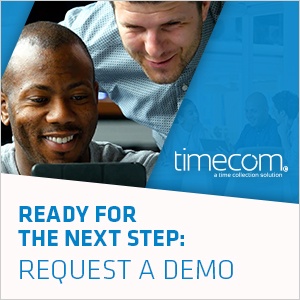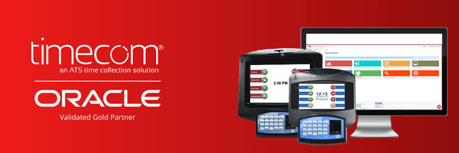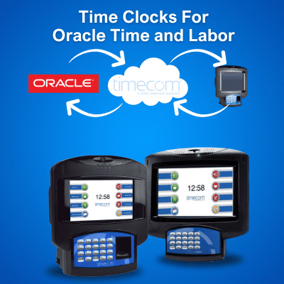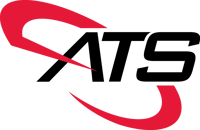At first glance, it may seem that workforce optimization is all about helping managers and HR. However, workforce optimization tricks and tools can also bring joy to your payroll department. Discover how each department can leverage workforce optimization solutions like Oracle timekeeping for solving business problems effectively with these tips and techniques.
4 Workforce Optimization Techniques for Payroll
Implementing the right processes to your payroll techniques is vital your company's success, listed below are three keys to maintaining an efficient payroll process:

#1 Reduce payroll administrative costs
Prep time and correcting errors are the main drivers of payroll administrative costs. Workforce optimization tools help avoid these costs by improving operational efficiency.
For example, they categorize all the different types of time collected. They know which employees to pay for travel time. WFO tools can distinguish between on-site contractors who don’t get paid lunch and employees who do. When payroll employees no longer have to do this work, it reduces payroll errors, saving time and money.
In addition to their administrative duties, the payroll team also incurs costs for addressing employees' frequently asked questions. When employees can answer their own questions with direct access to their payroll information, everyone saves time.
A large-screen time clock terminal lets employees look up their information, such as past payroll stubs or hours worked with employee self-service functionality (ESS).
#2 Ensure accurate and compliant time tracking
To optimize your workforce, it is essential to incorporate an automated time clock into your Oracle Timekeeping environment. The data flow between the workforce optimization software and the time clock helps managers and payroll teams address issues before they become problems. For example, companies can configure the time clock software to prevent employees from clocking in if they are not scheduled or clocking in too quickly.
The time clock should also be able to capture the location and hours when employees work, preventing unauthorized clock-ins, and improving data quality for compliance management.
Integrating your workforce optimization (WFO) with an automated time tracking system ensures accurate and compliant time records.
#3 Enforce strict time data integrity control
 The payroll team needs guidelines to determine when they can manually modify attendance data that has been collected. These standards ensure the integrity and accuracy of payroll. A time clock that collects real-time attendance simplifies enforcement of your time change policy.
The payroll team needs guidelines to determine when they can manually modify attendance data that has been collected. These standards ensure the integrity and accuracy of payroll. A time clock that collects real-time attendance simplifies enforcement of your time change policy.
Automated time data collection improves data accuracy. Nobody can change payroll hours unless the reason meets those standards. The clear policy minimizes last-minute time card changes. Now payroll staff does not need to take time to resolve such changes or delay running payroll.
#4 Move payroll from cost center to cost management tool
The payroll team does not always get the respect it deserves. The rest of the company does not notice the payroll team until something goes wrong. Payroll can change that perception by taking advantage of all the data available from the workforce optimization and attendance software.
The WFM tools already save the payroll team time by streamlining tasks and reducing errors. That leaves them time to perform more strategic tasks, like analyzing payroll to see if it reflects the company’s goals.
The payroll team can analyze hours and payroll data and share its insights with managers and finance. It could analyze the
- comparative costs of authorizing overtime versus hiring new permanent or temporary employees
- payroll allocation across departments
- payroll costs and allocation across roles
- employee productivity against payroll costs
Payroll can take this opportunity to position itself as a research and analytics arm for the company. It can start influencing company strategy and decisions, work smarter not harder.
4 Workforce Optimization Techniques for Onboarding
Companies need to take onboarding new hires seriously. How a company brings in new employees can indicate their future level of employee engagement.
The Society of Human Resource Management (SHRM) reports that 69% of employees are likely to be with the company after three years if they went through a structured onboarding process. It also reports that new employees who went through structured onboarding are 58% more likely to stay beyond three years.

HR teams can improve employee retention by using workforce management techniques that bring employees quickly into the fold.
#1 Onboarding isn’t just about paperwork
Onboarding should start well before the new employee’s first day and continue with check-ins for well after. Before the first day, a new hire can receive a welcome email that
- explains how the first few days or weeks will go
- provides contact information of a few key people, like their immediate manager and peer orientation partner. Many companies assign a peer orientation partner to facilitate their social integration into a company.
Certain companies view an employee's entire first year as the onboarding period. They schedule check-in points across the year to make sure new employees perform well and have the support they need to do excel.
#2 Eliminate paperwork entirely
Paperwork slows down everyone, yet they have to do it. Speed up the process by using an automated workforce optimization tool that guides the new hire through each step. Your company sets up the onboarding workflow and business rules.
HR saves itself and employees time by using an automated process for the new hire to complete the necessary paperwork. Often, the new hire can complete this part of the onboarding process before their first day.
The more automated the company’s onboarding process, the more likely all new employees will get the same information and training.
#3 Schedule sessions to teach new hires how to use company technology
 Every company has its unique mix of tools and technologies it uses to get work done. Even if a new hire used the same tool at a previous job, every place has its own customizations. A new employee who gets instruction on how the company uses an application will feel less overwhelmed. Automated tools can also help provide training through webinars and step-through wizards.
Every company has its unique mix of tools and technologies it uses to get work done. Even if a new hire used the same tool at a previous job, every place has its own customizations. A new employee who gets instruction on how the company uses an application will feel less overwhelmed. Automated tools can also help provide training through webinars and step-through wizards.
Also train employees on the administrative tools they’ll use. For example, how easily can they learn how to use the time clock? Clocking in is the first thing they’ll do at the new company.
Advanced time clocks have the ability to assist with employee onboarding. Companies can use time clocks with large screens and Internet connection to deliver short videos that:
- train employees how to use the time clock
- send messages reinforcing company policies they're just learning
- provide other short training modules
Companies interested in biometric time clocks should select one that helps new employees stand in the optimal position. Automated guidance like this ensures a positive “customer experience” at the time clock. It also improves the quality of the enrollment template the time clock will use to match future punches.
#4 Create a move forward plan
A new job is all about new possibilities. A comprehensive onboarding plan includes a track that focuses on the new hire’s professional development. One powerful workforce optimization technique is to pair the new hire with a mentor from day one. The mentor is available as an informal resource and someone who can help the employee outline and achieve performance goals.
Onboarding should include clear information about promotion standards, in-house up-training opportunities, and what external training support is available.
Like any relationship, a company gets back what it puts in. When the company values and supports a new employee, they are more likely to reciprocate with commitment. The best way to optimize your workforce is by ensuring that your employees are both happy and productive.
Empowering Payroll and HR: The Impact of Workforce Optimization Tools
When you implement workforce optimization tools and techniques, both payroll and HR departments benefit. These tools streamline operations and reduce errors. They also help you provide valuable services for employees like effective onboarding to access their information. They also empower payroll and HR to become strategic partners in the company's success.

While ATS is passionate about time and attendance and excited to support organizations navigate workforce dynamics around timekeeping, we recommend you reach out to your regional and/or local HR chapter for more information on common workplace advice and procedures.









